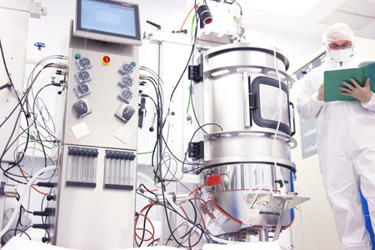BPSA's Single-Use Summit Celebrates Its "Stainless" Anniversary

By Matthew Pillar, Editor, Bioprocess Online

BPSA (Bio Process Systems Alliance) Chairman Mark Petrich, Ph.D. kicked off day 2 of the 11th 2024 BPSA International Single-Use Summit with a funny and ironic observation.
Anniversaries are milestones marked by universally-accepted material themes. Everyone knows 25 years is silver and 50 years is gold. Mark let the Summit’s audience in on a lesser-known fact when he noted that 11th anniversaries are associated with stainless steel.
Gotta love some single-use humor. The joke drew laughter from the several hundred SUS manufacturing execs, pharmaceutical users, analysts, and public stakeholders in attendance, and the irony only grew stronger as the day’s programming moved on.
When BioPlan Associates President and Managing Partner Eric Langer took the stage, he presented data gleaned from BioPlan’s 21st Annual Report and Survey of Biopharmaceutical Manufacturing Capacity and Production, and we saw the irony in full color. Single-use suppliers reported an average 13.5% increase in volume shipped between June 2023 and July 2024. What’s more, their projections through July 2025 are bullish. On average, suppliers are anticipating 28.5% volume growth over the next 12 months. Nearly three quarters of survey respondents said the coming year’s sales volume will grow year-over-year. That growth is happening on top of an established base of single-use equipment in the field. In 2024, BioPlan estimates that 70.3% of units used in clinical production in China are single-use or disposable, as are 65.9% in the US, 51.0% in Western Europe, and 63.8% in the rest of the world.
BioPlan’s report gives single-use suppliers, representatives of which comprised the bulk of the BPSA Summit’s attendees, plenty of good reason to jack up those sales forecasts. Asked about new budgetary expenditures, biopharmaceutical manufacturers indicated to BioPlan Associates that single-use adoption sits atop the expense ledger. Forty-one percent said disposable/single-use products, such as bags and connectors, are their largest budget item, while 31.3% said the same of single-use bioreactors. That’s second only to the 37.3% who indicated that automation, software, IT, and networking would be their largest line items in 2024. Stainless may still dominate commercial-scale manufacturing, but the tides are turning.
Biomanufacturer Representation Welcome?
As single-use systems continue to displace fixed manufacturing infrastructure, and at ever-increasing scales, the stakes of biopharmaceutical companies’ sourcing and supply strategies will only get higher. As I sat through the weighty sessions offered at the BPSA Summit, which went deep on supply chains, sustainability, new modalities, and more, I was struck by another irony. Dr. Petrich, who’s VP of Technical Operations at Krystal Biotech, is no doubt a single-use expert and advocate, having directed so much of the technology’s adoption during his many years at Merck and longtime work at BPSA. But, in his current capacity, he represents a minority in BPSA membership. Save for a few large pharma company representatives (Sanofi, Merck, J&J), biopharmaceutical companies and contract manufacturers were underrepresented. I found this a bit woeful, given the value offered by a top-notch lineup of presenters. What they shared is inarguably the best collection of single-use sourcing and operations insight available under one roof. Any biopharma manufacturer, from a clinical-scale startup to a global commercial manufacturer, would benefit from the understanding of single-use dynamics offered at the Summit.
The lack of manufacturer representation at the Summit is likely due more to history than design. BPSA, formed many moons ago as a single-use advocacy and integration group, naturally attracted the major suppliers. Back then, the single-use market was immature and poorly understood. That’s no longer the case, as proven by Langer’s presentation (and covered in incredible depth in the BioPlan Associates report). Now that single-use is standard (though, by no means standardized) and the major expense incurred by biopharmaceutical manufacturers, manufacturing industry representation could bring a lot to—and take a lot from—the BPSA table. Membership dues are well worth it, and I think Dr. Petrich would enjoy the company. Learn more at https://bpsalliance.org/.
